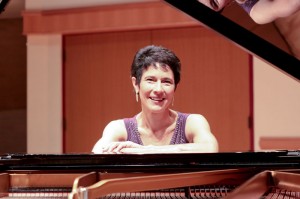From Tragedy to Triumph
My career was blossoming and I was thriving. Reviewers praised my performance of Beethoven’s “Emperor” Concerto. A month later, after performing the Brahms F minor Quintet, I left the concert stage feeling a great sense of pride and accomplishment. Before I reached the dressing room however, a dull throbbing pain in my right thumb suddenly commanded my full attention.

During the next eighteen months I searched unsuccessfully for a solution, trying a myriad of possible remedies: physical therapy, occupational therapy, hand braces, nerve conduction tests, cancer screenings, cortisone shots, massage, acupressure and anti-inflammatory drugs. Three board-certified hand specialists said that the pain was a result of tendonitis, frozen shoulder and Thoracic Outlet Syndrome. They said it would probably remain forever. Finally, urged by a previously injured friend, I attended the two-week-long Dorothy Taubman Institute in Amherst, Massachusetts, thinking that this would be my final attempt to fix my physical problems at the piano. If it failed, I would become an interior decorator or a realtor.
Following Mrs. Taubman’s recommendation, I began to study in New York City with Eleanor Hancock, a Juilliard graduate and long-term advocate of the Taubman Approach. In the beginning, I commuted to lessons every two weeks from Omaha, Nebraska and Houston, Texas. My early work with Eleanor involved slowly playing single notes while ensuring that my forearm supported my fingers. Eventually, I meticulously explored excerpts from Mozart concerti. Within a few months the pain was gone. Two years later, I performed Beethoven’s Opus 27, No. 1 Piano Sonata for an audience of 2,000. I worked with Eleanor for 20 years. After her death in 2006, I began teaching in New York City and working with Edna Golandsky and John Bloomfield.
Thirty years after my devastating experience of pain with the Brahms F minor Quintet, I carefully relearned the piece, applying what I had been taught about playing with physically correct motions. Encountered again, the technical demands of the composition were effortless, and the musical aspects soared. My initial effort to eliminate pain had led to an even more important discovery. I experienced the inseparability of technique and musicality—the true joy in performing successfully. My tragedy had turned into triumph.
